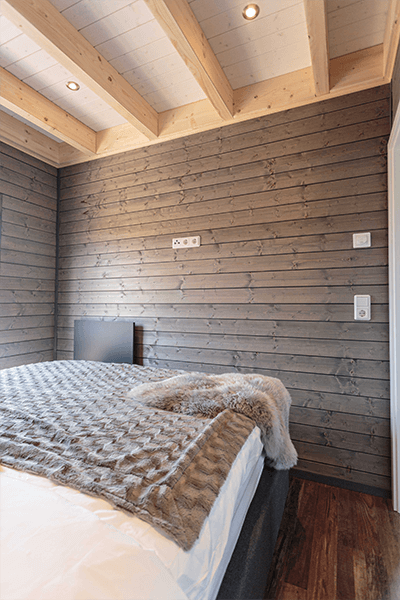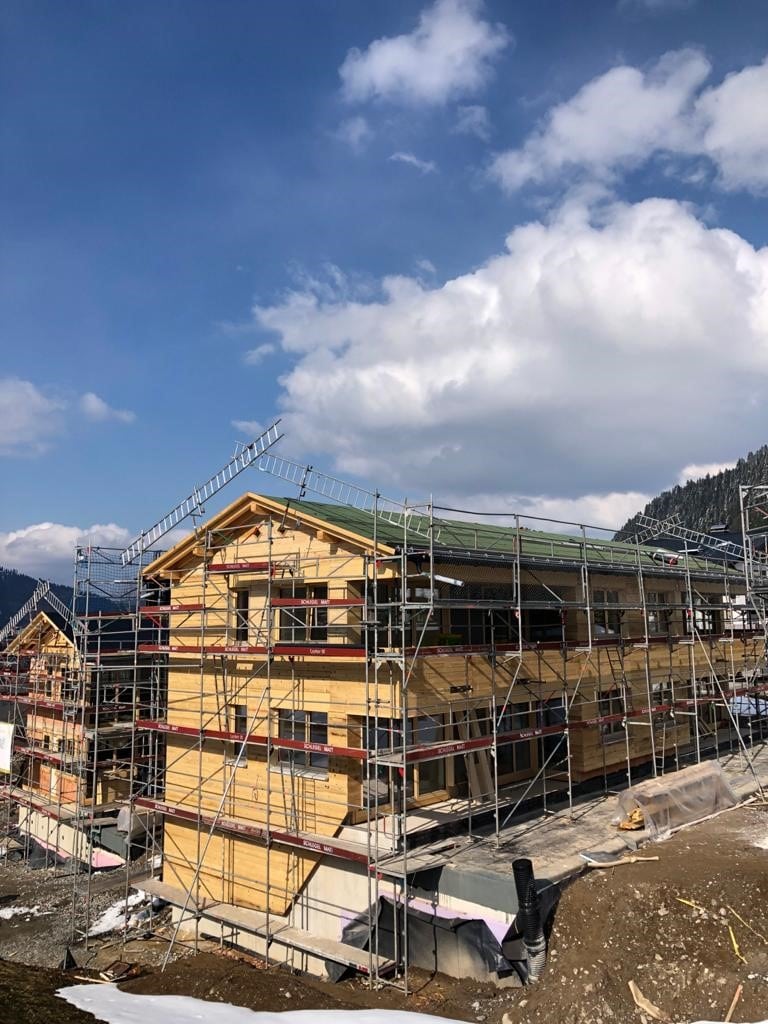In the Swiss Alps, particularly in the canton of Valais, chalets stand for even more than just hill homes; they represent an enduring cultural identity, a timeless link to landscape, and an building form deeply rooted in towering tradition, and the expanding pattern of protecting chalet identity while creating contemporary lifestyles reflects the delicate equilibrium in between respecting heritage and accepting innovation in modern living. Historically, Swiss chalets were created with usefulness in mind, utilizing neighborhood timber and rock to stand renovate chalet Switzerland up to harsh alpine environments, their sloping roof coverings created to drop heavy snow, and their wood balconies decorated with flower information that added appeal to rustic villages. For generations, these frameworks have actually remained icons of the alpine globe, yet contemporary home owners and investors now look to remodel them in ways that maintain this credibility while adapting to lifestyle needs formed by performance, convenience, and high-end. Restoration projects generally start with a regard for traditional outsides-- facades of weather-beaten larch wood, stonewall structures, and unique workmanship that ties the home to its alpine roots-- while insides evolve into open-plan living areas boosted by all-natural light, breathtaking glazing, minimal yet warm style aspects, and technology-driven services. Sustainability is progressively main, as chalets in Valais and other Swiss regions are being updated with eco-conscious attributes such as geothermal heating, photovoltaic solar panels, incorporated heatpump, and advanced insulation systems, all developed to reduce ecological effect while making sure year-round comfort in a hill environment. These elements not only align with Swiss ecological policies but likewise accommodate a growing global audience of eco-conscious customers. In parallel, clever home systems are being integrated, giving homeowners control over home heating, lights, safety and security, and also power usage, whether in the house or abroad, more combining practice with innovation. While sustainability and performance are essential, way of living considerations have actually transformed cabin renovations right into opportunities for deluxe also. Several modernized huts currently consist of health locations including saunas, hammams, and hot tubs, along with wine cellars, enjoyment spaces, and chef-grade kitchen areas, all while retaining exposed beams, rock fire places, or handmade woodwork that embody the heat of towering heritage. Exterior living is similarly crucial, with large terraces, designed yards, and heated swimming pools developing seamless connections with panoramic hill sights. This mixing of past and future has solid financial investment potential, as residential or commercial properties that keep their genuine identity while offering contemporary conveniences regulate high demand and lasting value in resorts such as Verbier, Zermatt, Crans-Montana, and Saas-Fee.
This mixing of past and future has solid financial investment potential, as residential or commercial properties that keep their genuine identity while offering contemporary conveniences regulate high demand and lasting value in resorts such as Verbier, Zermatt, Crans-Montana, and Saas-Fee. Significantly, accomplishing this balance needs compliance with stringent building laws in Switzerland, made to preserve the character of hill villages and protect the natural surroundings. Consequently, house owners usually work very closely with neighborhood designers, designers, and artisans-- experts that bridge the gap between typical alpine building and modern architectural methods. Their expertise makes certain that a cabin can maintain its regional authenticity while achieving the contemporary criteria of functionality, aesthetic allure, and sustainability required by today's buyers. For family members wanting to bring back a cabin passed down via generations, for investors considering the profitable short-term rental market, or for people seeking an alpine hideaway that symbolizes both comfort and heritage, the process of protecting hut identification while developing contemporary lifestyles opens not simply building worth however additionally psychological and monetary significance. Possessing a cabin in Valais mountain home renovation or various other Swiss alpine regions increasingly implies having a building that tells a story of history while functioning as a home prepared for decades ahead. This pattern highlights Switzerland's forward-thinking vision of lining up cultural conservation with practical advancement, demonstrating how even the earliest buildings can develop responsibly without losing their heart. Ultimately, preserving cabin identification while producing contemporary way of lives is about sustaining towering traditions, commemorating the significance of mountain living, and supplying modern comfort in manner ins which honor both individuals and location-- a viewpoint that reverberates with locals and global home hunters alike, making certain cabins remain to prosper as symbols of heritage, modernity, and enduring Alpine appeal.
Significantly, accomplishing this balance needs compliance with stringent building laws in Switzerland, made to preserve the character of hill villages and protect the natural surroundings. Consequently, house owners usually work very closely with neighborhood designers, designers, and artisans-- experts that bridge the gap between typical alpine building and modern architectural methods. Their expertise makes certain that a cabin can maintain its regional authenticity while achieving the contemporary criteria of functionality, aesthetic allure, and sustainability required by today's buyers. For family members wanting to bring back a cabin passed down via generations, for investors considering the profitable short-term rental market, or for people seeking an alpine hideaway that symbolizes both comfort and heritage, the process of protecting hut identification while developing contemporary lifestyles opens not simply building worth however additionally psychological and monetary significance. Possessing a cabin in Valais mountain home renovation or various other Swiss alpine regions increasingly implies having a building that tells a story of history while functioning as a home prepared for decades ahead. This pattern highlights Switzerland's forward-thinking vision of lining up cultural conservation with practical advancement, demonstrating how even the earliest buildings can develop responsibly without losing their heart. Ultimately, preserving cabin identification while producing contemporary way of lives is about sustaining towering traditions, commemorating the significance of mountain living, and supplying modern comfort in manner ins which honor both individuals and location-- a viewpoint that reverberates with locals and global home hunters alike, making certain cabins remain to prosper as symbols of heritage, modernity, and enduring Alpine appeal.
 This mixing of past and future has solid financial investment potential, as residential or commercial properties that keep their genuine identity while offering contemporary conveniences regulate high demand and lasting value in resorts such as Verbier, Zermatt, Crans-Montana, and Saas-Fee.
This mixing of past and future has solid financial investment potential, as residential or commercial properties that keep their genuine identity while offering contemporary conveniences regulate high demand and lasting value in resorts such as Verbier, Zermatt, Crans-Montana, and Saas-Fee. Significantly, accomplishing this balance needs compliance with stringent building laws in Switzerland, made to preserve the character of hill villages and protect the natural surroundings. Consequently, house owners usually work very closely with neighborhood designers, designers, and artisans-- experts that bridge the gap between typical alpine building and modern architectural methods. Their expertise makes certain that a cabin can maintain its regional authenticity while achieving the contemporary criteria of functionality, aesthetic allure, and sustainability required by today's buyers. For family members wanting to bring back a cabin passed down via generations, for investors considering the profitable short-term rental market, or for people seeking an alpine hideaway that symbolizes both comfort and heritage, the process of protecting hut identification while developing contemporary lifestyles opens not simply building worth however additionally psychological and monetary significance. Possessing a cabin in Valais mountain home renovation or various other Swiss alpine regions increasingly implies having a building that tells a story of history while functioning as a home prepared for decades ahead. This pattern highlights Switzerland's forward-thinking vision of lining up cultural conservation with practical advancement, demonstrating how even the earliest buildings can develop responsibly without losing their heart. Ultimately, preserving cabin identification while producing contemporary way of lives is about sustaining towering traditions, commemorating the significance of mountain living, and supplying modern comfort in manner ins which honor both individuals and location-- a viewpoint that reverberates with locals and global home hunters alike, making certain cabins remain to prosper as symbols of heritage, modernity, and enduring Alpine appeal.
Significantly, accomplishing this balance needs compliance with stringent building laws in Switzerland, made to preserve the character of hill villages and protect the natural surroundings. Consequently, house owners usually work very closely with neighborhood designers, designers, and artisans-- experts that bridge the gap between typical alpine building and modern architectural methods. Their expertise makes certain that a cabin can maintain its regional authenticity while achieving the contemporary criteria of functionality, aesthetic allure, and sustainability required by today's buyers. For family members wanting to bring back a cabin passed down via generations, for investors considering the profitable short-term rental market, or for people seeking an alpine hideaway that symbolizes both comfort and heritage, the process of protecting hut identification while developing contemporary lifestyles opens not simply building worth however additionally psychological and monetary significance. Possessing a cabin in Valais mountain home renovation or various other Swiss alpine regions increasingly implies having a building that tells a story of history while functioning as a home prepared for decades ahead. This pattern highlights Switzerland's forward-thinking vision of lining up cultural conservation with practical advancement, demonstrating how even the earliest buildings can develop responsibly without losing their heart. Ultimately, preserving cabin identification while producing contemporary way of lives is about sustaining towering traditions, commemorating the significance of mountain living, and supplying modern comfort in manner ins which honor both individuals and location-- a viewpoint that reverberates with locals and global home hunters alike, making certain cabins remain to prosper as symbols of heritage, modernity, and enduring Alpine appeal.




 Are You Embarrassed By Your Cctv Drain Survey Portsmouth Expe...
Are You Embarrassed By Your Cctv Drain Survey Portsmouth Expe...